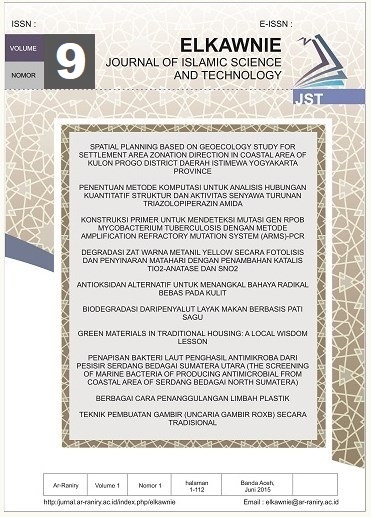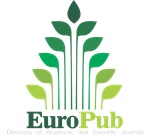Vibrations of Dhikrullah as a Relaxation Medium for The Brain
DOI:
https://doi.org/10.22373/ekw.v9i2.17529Keywords:
Vibration, Dhikrullah, Media, Relaxation, BrainAbstract
Abstract: Dhikrullah according to the Qur'an is a vibroacoustic phenomenon that affects the human nervous system. Among Muslims, the topic of dhikrullah is a significant issue because it is believed to be a medium that directly connects humans with God. Among spiritual researchers, they are still questioning the role and influence of dhikrullah as a medium for relaxing the brain. This paper discusses the role of dhikrullah vibrations as a medium of relaxation in the brain as the human control center. Studies by Richard Gerber and David R. Hawkins provide significant data on the role of vibration as dhikrullah medicine and relaxation vibrations. To this day, the practice of dhikrullah can still be found widely among Muslim communities. The dhikrullah model was obtained qualitatively from 4 dhikrullah practitioner informants through participant observation and interviews. While brain wave samples were obtained quantitatively from 10 subjects via Electroencephalograph (EEG). From the field research, it was found that the dhikrullah model was found, and from the EEG recording results, it was found that the dhikrullah vibrations affected all subjects, produced a calming effect on all subjects, and were used as a medium for changing consciousness, as a medium for relaxation, and activating relaxation. The novelty of this research lies in the use of EEG to prove the effect of dhikrullah vibrations as a medium for relaxation in the brain. The results of this study make it clear that dhikrullah vibrations can be used by the parties as a medium to permanently increase relaxation in the brain.
Abstrak: Dhikrullah menurut al-Quran merupakan fenomena vibroakustik yang mempengaruhi sistem saraf manusia. Di kalangan muslim, topik dhikrullah menjadi isu signifikan karena diyakini sebagai media yang menghubungkan manusia dengan Tuhan secara langsung. Penelitian ini bertujuan untuk mengetahui pengaruh dhikrullah sebagai media relaksasi otak manusia yang ditunjukkan dengan peran vibrational medicine dan vibrasi relaksasi. Metode penelititian dilakukan secara kualitatif dan kuantitatif. Metode kualitatif menggunakan observasi dan interview, sedangkan data kuantitatif diperoleh dari gelombang otak menggunakan Electro Encephalo Graf (EEG). Kajian ilmiah menyajikan data signifikan tentang peran vibrasi sebagai vibrational medicine dan vibrasi relaksasi. Hingga hari ini, praktek dhikrullah masih dapat ditemukan secara luas di kalangan masyarakat muslim. Model dhikrullah diperoleh secara kualitatif dari empat informan praktisi dhikrullah melalui observasi partisipan, dan wawancara. Sedangkan sampel gelombang otak diperoleh secara kuantitatif dari 10 subjek melalui Electro Encephalo Graf (EEG). Dari penelitian lapangan ditemukan model dhikrullah dan dari hasil perekaman EEG ditemukan vibrasi dhikrullah mempengaruhi seluruh subjek, menghasilkan efek tenang pada semua subjek, sebagai media perubahan kesadaran, sebagai media relaksasi dan mengaktifkan relaksasi. Kebaruan penelitian ini terletak pada penggunaan EEG untuk membuktikan pengaruh vibrasi dhikrullah sebagai media relaksasi pada otak. Hasil kajian tentang perubahan gelombang otak karena berzikir selama 3 hingga 5 menit memperjelas bahwa vibrasi dhikrullah dapat digunakan para pihak sebagai media untuk meningkatkan relaksasi pada otak secara permanen.
References
Ashhad, S., Kam, K., Del Negro, C. A., & Feldman, J. L. (2022). Breathing rhythm and pattern and their influence on emotion. Annual Review of Neuroscience, 45, 223-247.
Braboszcz, C. (2012). Study of the electroencephalographic correlates of mind wandering and meditation (Doctoral dissertation, Université Paul Sabatier-Toulouse III).
Bryant, G. A. (2021). The evolution of human vocal emotion. Emotion review, 13(1), 25-33.
Bukar, A., Abdullah, A., Opara, J. A., Abdulkadir, M., & Hassan, A. (2019). Catharsis as a therapy: An overview on health and human development. Outlook On Human Capacity Building And Development, 148.
Chandrawijaya, E. F., Yudiarso, A., & Rahayu, Y. P. (2022). EEG power spectral analysis and saccadic eye movement for true and false information. Jurnal Ilmiah Psikologi Terapan, 10(1), 9-16.
Fajri, N. (2020). Frekuensi Gelombang Otak dalam Menangkap Ilmu Imajinasi dan Realita (Berdasarkan Ontologi). Jurnal Filsafat Indonesia, 3(2), 40-47.
Hasanain, B., Boyd, A. D., & Bolton, M. L. (2016). Using Model Checking to Detect Simultaneous Masking in Medical Alarms. IEEE Transactions on Human-Machine Systems, 46(2), 174–185. https://doi.org/10.1109/THMS.2014.2379661
Halgren, M., Ulbert, I., Bastuji, H., Fabó, D., Erőss, L., Rey, M., ... & Cash, S. S. (2019). The generation and propagation of the human alpha rhythm. Proceedings of the National Academy of Sciences, 116(47), 23772-23782.
Hindarto, H., & Muntasa, A. (2019, May). Extraction of ElectroEncephaloGraph (EEG) Signal Using the Subband Coefficient of Wavelet Transform on Cursor Moves. In IOP Conference Series: Materials Science and Engineering (Vol. 532, No. 1, p. 012013). IOP Publishing.
Hink, R. F., & Hillyard, S. A. (1976). Auditory evoked potentials during selective listening to dichotic speech messages. Perception & Psychophysics, 20(4), 236-242.
Indrawanto, I. S. (2015). Sindroma Hiperventilasi. Saintika Medika, 11(2), 78-84.
Khazan, I. Z. (2013). The clinical handbook of biofeedback: A step-by-step guide for training and practice with mindfulness. John Wiley & Sons.
Kożuch, B., & Tatara, T. (2016). Impact of the vibrations on the environment caused by passages of trains at variable speed. In E3S Web of Conferences (Vol. 10, p. 00047). EDP Sciences.
Loor, J. M. Q., Mera, J. L. A., Moreno, L. A. C., Palma, J. K. T., & Montes, L. C. Z. (2020). Neuroscience: alloy for early childhood education. International Journal of Health Sciences, 4(1), 25-32.
Nabilah, A. R. N., Azami, S. K., Dafhalla, A. K. Y., Adibah, M. R. H., & Naimah, Y. (2021). The Effect of Meditation on Brain Relaxation Incorporating Different Physiological Activities. Journal of Physics: Conference Series, 1962(1). https://doi.org/10.1088/1742-6596/1962/1/012059
Naji, A.-A., Rahimian-Bogar, I., & Talepasand, S. (2022). A Pattern of Brain Waves in Response to Induced Stress with Different Cognitive Readiness. Int J Behav Sci, 16(3), 191–197.
Raghu, M. (2018). A study to explore the effects of sound vibrations on consciousness. Int. J. Soc. Work Hum. Serv. Pract, 6(3), 75-88.
Shah, V. D. (2021). A Critique of Vibroacoustic Therapy for Physical and Mental Ailments. The Undergraduate Journal of Psychology.
Shiota, M. N., Neufeld, S. L., Danvers, A. F., Osborne, E. A., Sng, O., & Yee, C. I. (2014). Positive emotion differentiation: A functional approach. Social and Personality Psychology Compass, 8(3), 104-117.
Toscani, M., Marzi, T., Righi, S., Viggiano, M. P., & Baldassi, S. (2010). Alpha waves: a neural signature of visual suppression. Experimental brain research, 207, 213-219.
Troyer, J. A. (2011). Level of consciousness: Reframing our understanding of individual differences in learning. Procedia-Social and Behavioral Sciences, 12, 290-299.
Uher, I., Pasterczyk, A., Bigosińska, M., & Švedová, M. (2018). Vibration therapy and its influence on health. Biomed. J. Sci. Tech. Res, 6, 3-7.
Wan Ismail, W. O. A. S., Hanif, M., Mohamed, S. B., Hamzah, N., & Rizman, Z. I. (2016). Human emotion detection via brain waves study by using electroencephalogram (EEG). International Journal on Advanced Science, Engineering and Information Technology, 6(6), 1005–1011. https://doi.org/10.18517/ijaseit.6.6.1072
Yan, S. W., Bush, N. E., & Hartmann, M. J. (2019). Whisker vibrations and the activity of trigeminal primary afferents in response to airflow. Journal of Neuroscience, 39(30), 5881-5896.
Downloads
Published
Issue
Section
License
Proposed Policy for Journals That Offer Open Access Authors who publish with the Elkawnie journal agree to the following terms:
a. Authors retain copyright and grant the journal right of first publication with the work simultaneously licensed under a Creative Commons Attribution License that allows others to share the work with an acknowledgement of the work's authorship and initial publication in this journal.
b. Authors are able to enter into separate, additional contractual arrangements for the non-exclusive distribution of the journal's published version of the work (e.g., post it to an institutional repository or publish it in a book), with an acknowledgement of its initial publication in this journal.
c. Authors are permitted and encouraged to post their work online (e.g., in institutional repositories or on their website) prior to and during the submission process, as it can lead to productive exchanges, as well as earlier and greater citation of published work (see The Effect of Open Access).

























